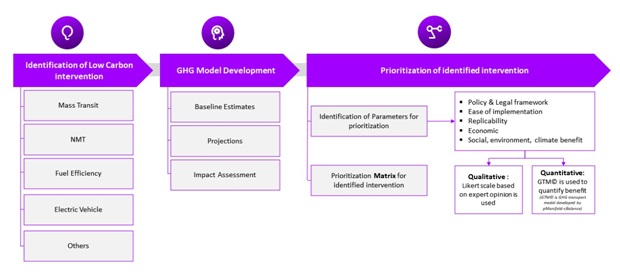Low emission development strategy (LEDS): Paving way for surface transport decarbonization
Globally climate change is causing catastrophe damage to natural environment deterring the economic progress. Increase in global population, rapid urbanization has caused a huge surge in transport demand resulting in rise of transport emissions.The transport sector is prime contributor to greenhouse gas emissions (GHG) responsible for 24% of carbon dioxide (CO2) emissions with surface transport accounting for nearly three-quarters of transport CO2 emissions. Decarbonization is the vital component that helps attenuate climate change by restricting CO2 emissions.This calls for rapid decarbonizing strategies to achieve net zero emissions as outlined in the Paris Agreement.The governments worldwide are eyeing development plans leading to low GHG emissions and boosting the social, economic, and environmental growth thus paving way for low emission development strategies (LEDS).

How LEDS can help achieve low carbon economy?
LEDS provide integrated planning to advance national economic development and climate change policies in a more integrated, systematic, and strategic way.It can be designed to create a holistic intervention plan by identifying low carbon transport interventions which can be emission standards, shared mobility, electric passenger vehicles, improvement of fuel efficiency, etc. GHG modeling can be developed for baseline estimates, projection and impact assessment of each identified intervention. A prioritization matrix can be developed based on different criteria like Policy and Legal Framework, Ease of Implementation, Economics, Social Benefits, Environment Benefits, Climate Benefits and Replicability. Marginal Abatement Cost Curve (MACC) analysis which is one of the key parameters can be done to quantify benefits and prioritize the interventions based on abatement cost.Targets can be defined for each identified intervention to make improved policy decisions.The entire process of prioritization can be done in collaboration with stakeholders. An institutional structure can be proposed for interventions which ensure smooth policy and planning regulation, its execution and monitoring and control. Also, action plans to identify most suitable sources of financing options available for each LEDS intervention can be explored.Thus, LEDS can help achieve low carbon economy.

The proposed LEDS can be a standard setting instrument that helps identify the source of GHG emissions of a country and provides staggering data from prioritization of interventions. It can result in strong collaboration of development planning and scientific analysis. It can enhance framework conditions necessary for private sector investment in mitigation actions. Thereby helping the countries to achieve zero emission. Such strategic planning and analysis have been carried out by pManifold for one of its client country.All in all, low carbon emissions can be accomplished with strategic planning and timely actions.


